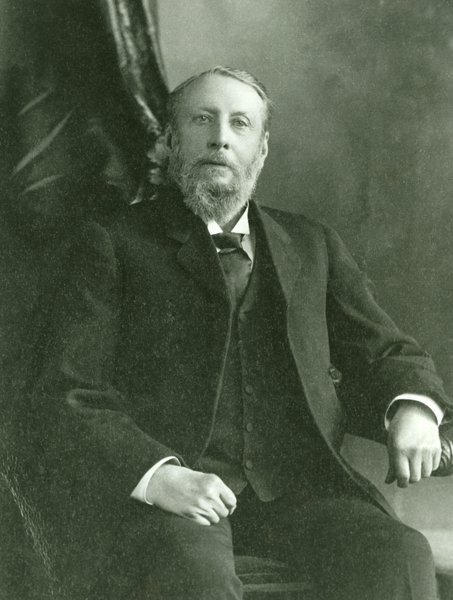The initial idea was stimulated by the Irish surname map created on ArcGIS software in 2009 by Dr. Ken Field and Dr. Linda Beale. Using birth records from 1890, they mapped the surnames by county, varying the font size of the name by the number of instances in each location. This map project was called Mapping the Emerald Isle: A Geo-Genealogy of Irish Surnames, (now "Mapping Irish Surnames"), and is a wonderful example of the recent drive to develop Historical GIS.
The geo-genealogy concept is aimed at combining digital geography with digital genealogy. In our case, the project is aimed at developing a geo-genealogy infrastructure for Nova Scotia using a unique historico-geographical dataset in the A.F. Church maps. Large historical datasets have not previously been available at the household-level of geography in Canada. This project seeks to digitize and make interactive an extraordinary resource which will be used to build a general framework for geo-genealogy in the province, and for use in continuing research, development, and application.
 Over a period of some 23 years, between 1865 and 1888, the cartographer, Ambrose Church, published topographic maps with the precise geographical location and surname of each household and workplace for all 18 counties of Nova Scotia (Ferguson, 1969-70).1 Mylar copies of the original lithographs are held by the Nova Scotia Department of Natural Resources, and original lithographs of the maps are held by many of the community historical societies around the province. There are three larger collections at the
Nova Scotia Archives, the Nova Scotia Museum, and the Centre of Geographic Sciences (COGS), but none of these collections are complete. The remaining copies, now more than a hundred and thirty years old and much degraded, are in danger of being lost for all time.
Over a period of some 23 years, between 1865 and 1888, the cartographer, Ambrose Church, published topographic maps with the precise geographical location and surname of each household and workplace for all 18 counties of Nova Scotia (Ferguson, 1969-70).1 Mylar copies of the original lithographs are held by the Nova Scotia Department of Natural Resources, and original lithographs of the maps are held by many of the community historical societies around the province. There are three larger collections at the
Nova Scotia Archives, the Nova Scotia Museum, and the Centre of Geographic Sciences (COGS), but none of these collections are complete. The remaining copies, now more than a hundred and thirty years old and much degraded, are in danger of being lost for all time.
In late 2019, the Nova Scotia heritage community initiated a public appeal to the people of Nova Scotia to assemble the best of the remaining copies to physically restore, preserve, and digitize one complete set. We were humbled to receive map donations from people throughout the province, as well as from ex-patriates now living in other provinces - maps which often were family treasures, or had been used as working maps in occupations - given up as a gift to those generations coming after us: "to you from failing hands we throw the torch".
Because the map lithographs are now flaking so badly, we are grateful to have received more than one copy for many counties, copies which can be used for digital repair to get a final digitization that is as close to pristine as it is now possible to achieve. In all, we have been able to build a fourth significant collection of the A. F. Church maps, with coverage of 14 of the 18 counties.
Preserving these maps is an important first step, but its importance is related to the uniquely valuable information on them. The Church maps can be used to prepare geocodes with precise latitudes and longitudes for households in the province during that period. The surnames then are used as a means to create links to household-level census information and other genealogical and historical data. There are a small class of exceptions, being those households and workplaces in the town and city centres which were too closely placed for Church to write the names on the map, and other methods are necessary in those locations. In the present project, we have begun with work on three counties - Antigonish, Hants, and Halifax counties - and have already completed map preservation, digitization, geo-referencing, and transcription in these areas.
The census population of Nova Scotia in 1881 was 440,572, distributed over 74,154 dwellings, and these maps provide the means to identify household locations for most of these. The digitization of the A. F. Church maps, the use of household-level property information, and the transcription of directory data to help identify the households in town and city centres, can provide the geographical base for a geo-genealogy architecture for the province. We are happy to report that this process is underway. Given the scale and scope of work, it will have to be done sequentially, one county after another. But the first project is already in play.
________________________
References
1. Ferguson, Charles Bruce. (1969-70). "Ambrose F. Church, Map-Maker." (11.8 MB) Dalhousie Review: Vol. 49, No. 4, 505-516.
 KITH is working with heritage groups in Antigonish, Hants and Halifax counties to preserve and digitize the A. F. Church maps and match the map information with existing genealogical records. The goal is to improve our understanding of the history and social relations in nineteenth century Nova Scotia, and make this data publicly accessible.
KITH is working with heritage groups in Antigonish, Hants and Halifax counties to preserve and digitize the A. F. Church maps and match the map information with existing genealogical records. The goal is to improve our understanding of the history and social relations in nineteenth century Nova Scotia, and make this data publicly accessible.
